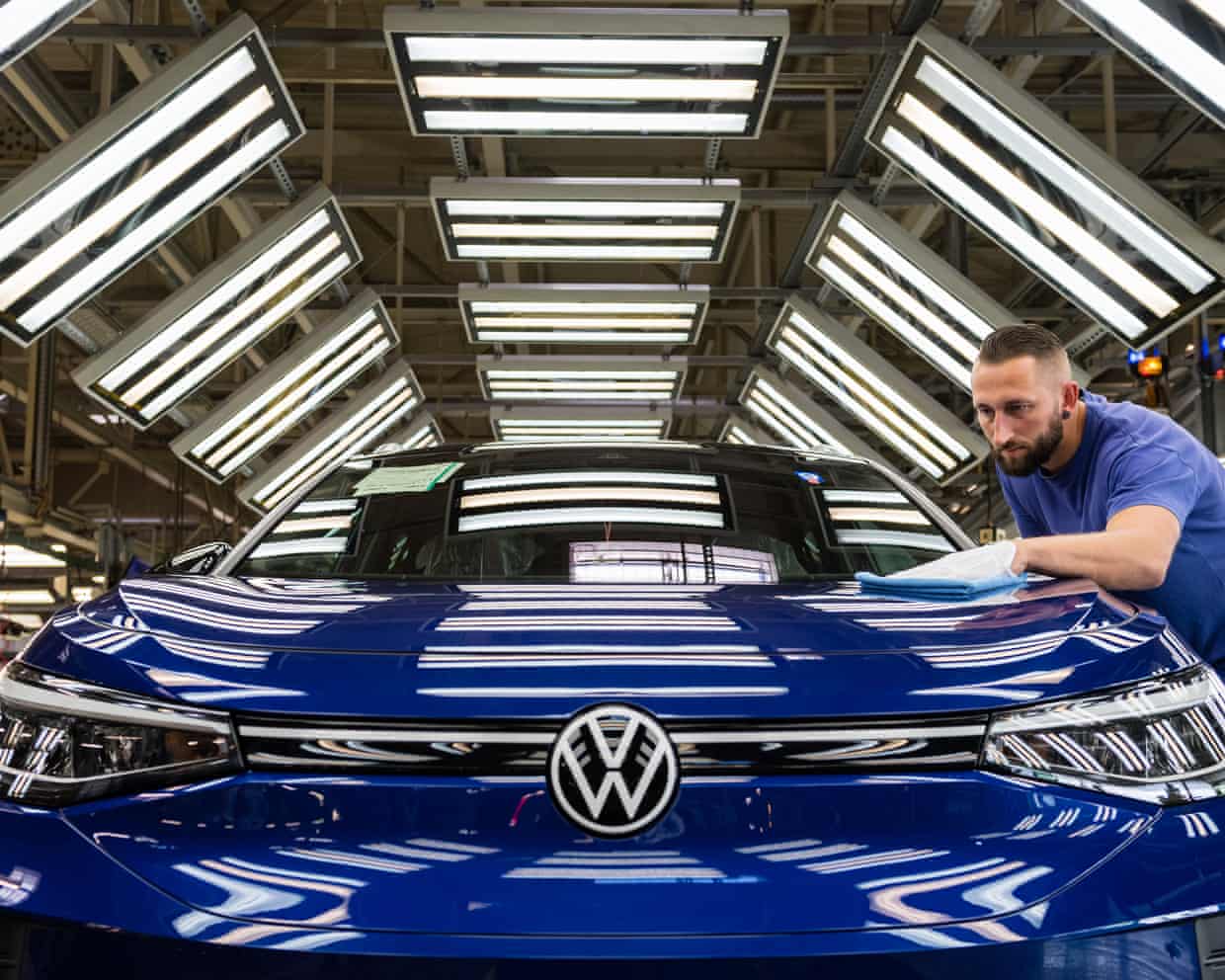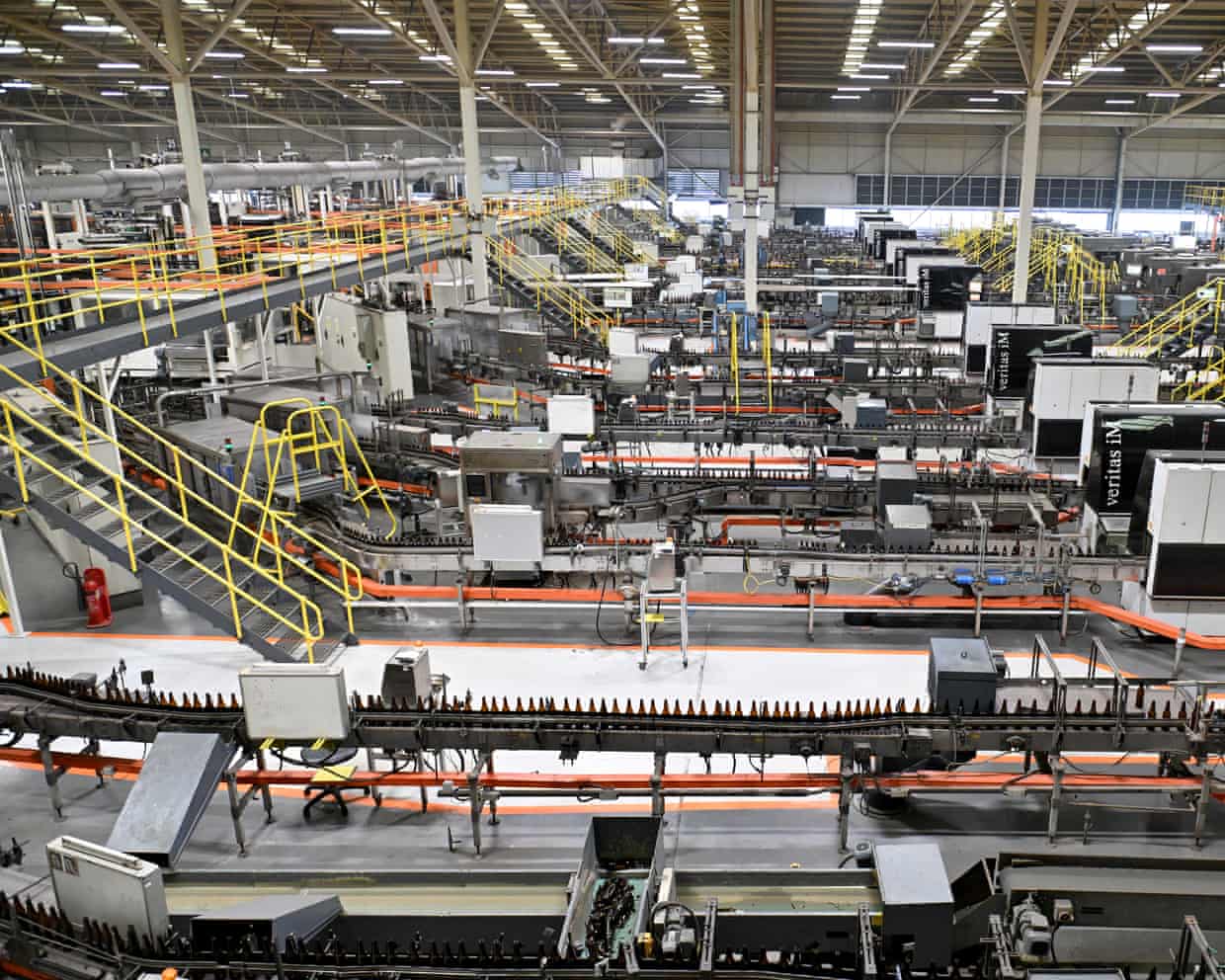Just redo it: inside Nike’s plans to put the swoosh back into its sales

The entrance to Nike’s swish global headquarters in Beaverton, Oregon is paved with rough cobbles, designed to remind employees to watch their step when they go forward.Last summer, though, not even the world’s biggest sports brand could stop itself from taking an almighty tumble.Over the course of one July day in 2024, Nike’s share price plummeted by $28bn – the worst single-day performance in the company’s history – after it revealed that second-quarter sales were down 10%.There were headlines proclaiming that Nike was in crisis.That it had lost its cool, become either too woke, too safe, too conservative or too cumbersome, depending on their political stripe and reading of the situation.
To no one’s surprise, its chief executive, John Donahoe, stepped down.True, Nike was still worth around $100bn – more than twice the value of its closest rival, Adidas, and even further clear of Puma, Lululemon and New Balance.And, yes, the cost of living crisis didn’t help.But much of the pain was self-inflicted.Just over a year later I am sitting with Nike’s new president and chief executive, Elliott Hill, talking about how he intends to turn the company around with the help of some wild new innovations, including the world’s first motor-powered running and walking shoe.
Soon I will also hear about “mind shoes” that help Erling Haaland focus before matches, a self-inflating winter jacket that Team USA will wear at the Winter Olympics and technology that aims to help England’s footballers at the World Cup.Before then, though, I throw Hill – a huge soccer and baseball fan – a curveball.Might Nike’s recent kicking actually turn out to be a good thing? Both for consumers, who now have more choice from upstart brands such as On and Hoka, and for his company – as it has forced it to raise its game?Hill laughs, then leans in.“Trust me, I would have preferred not to go through the kicking,” he says.“And this one happens to be a pretty big kicking.
But I do think it helps us refocus on why we exist, and is a rallying cry for us as a company,I think it helps us get sharper,We’re at our best when we’re competing,And not only competing, but competing and winning,”Hill’s answer is open, honest and authentic: a face that Nike hasn’t always shown to outsiders.
And the 62-year-old is just as direct when it comes to his plans to turn the company round using sport and trusting in new ideas.“On my first day, I stood up on stage and my first slide said we are a sport company and we are a growth company, and they’re not mutually exclusive,” he says.“And when we invite eight billion consumers into the world of sport, I like our chances of growing.“I know it sounds simplistic,” adds Hill, who joined Nike as an intern in 1988 and came back last October having retired in 2020.“But the response from around the world was: OK, we’re back to sport.
We exist to serve the athletes.And when we do that well, that usually translates into innovative products, emotional storytelling, and then it pays off at retail.”Internally Nike is signalling that fresh direction with a six-word mission statement: “Create Epic Shit, Make Athletes Better.”It is provocative and bombastic.In other words, classic Nike.
But, as Phil McCartney, Nike’s chief innovation, design and product officer, explains, it is also a tribute to one of its most famous athletes.“Create epic shit is something that we got from Kobe Bryant,” he says.“He used to walk the halls here and say: ‘Are you creating epic shit?’ It’s a standard of excellence.It has a bit of an attitude to it.And we’re already starting to use it when we look at our innovations.
Is it that? If it’s not, then we shouldn’t do it.”Not so long ago, McCartney, who grew up in Wallsend in the north-east of Englandand was once a talented Great Britain runner, remembers an acquaintance telling him that the brand had become “big, dumb and slow”.“And it sort of struck a chord with a lot of us,” he says.“Because that’s not who we are, it’s not how we want to operate.And it’s definitely not our future.
”‘Nobody here is crazy.We just live in the future’Later that morning I am standing outside Nike’s LeBron James Innovation Center, a 750,000-square-foot facility which has 400 motion-capture cameras, nearly 100 force plates and male and female sweat-testing dummies, waiting to stare into that future.First I put on a normal-looking pair of super shoes.Then I attach a prototype device containing a motor to my ankles, calves and the shoes themselves.After that, a senior Nike biomechanical engineer, Alison Sheets, presses a button, and the device starts to whirr and fit more snuggly around my legs.
I feel like RoboCop, and initially when I walk I move like him too.But when I start running and Alison ramps up the power via an app, I suddenly turn into Forrest Gump.Despite very little effort, I am running far quicker than my effort level – and my mind – tells me I should be.It is more than a little weird.But also a whole lot of fun.
Incredibly, at one point I jog up the 150-metre ramp on Nike’s campus which has a 15.63% incline – without being remotely out of breath.(If evidence didn’t exist, I wouldn’t blame you for wondering which substances in downtown Portland I had been inhaling.)“We’re actually putting a robot on your body,” explains Michael Donaghu, Nike’s VP of create the future, emerging sport and innovation.“And we want that robot to be your best friend.
”What makes all this even harder to compute is that I happen to have been hobbling around with a heavily bruised little toe.Yet the shoe seems to take most of the impact off the joint, like an anti-gravity treadmill, allowing me to run with only minor pain.Nike calls this motorised shoe Project Amplify and likens it to an ebike for feet, allowing the general population – rather than serious runners – to run or walk far quicker than they otherwise would do.How much quicker? In testing, the company’s researchers found that athletes experienced anywhere from a 9-22% improvement in metabolic effort.In other words, like going from a 12-minute mile to a 10-minute mile, using the same effort.
Donaghu says that Nike engineers had been working on various iterations of the device for years, but it was Hill’s return that made it happen.“We sat down, pitched him on what the idea was and unflinchingly, he was like: ‘This is absolutely what Nike should be about,’” he says.“Nobody here is crazy.We just live in the future and have bigger dreams.”At next summer’s men’s World Cup, Nike’s sponsored teams, including England, the USA and Brazil, will be wearing kits with a new Aero-Fit material which – Nike says – will allow players to feel cool even in very hot and humid conditions.
For good measure it is also made from 100% textile waste.Before then it will release the Air Milano, a jacket that inflates in 30 seconds and can generate warmth levels that range from a lightweight hoodie to a mid-level puffer and which will be worn by Team USA at the Winter Olympics.Finally there is the Nike Mind, a shoe and slider that contain cushioning nodes which press on the sensors in the feet and – the company says – improve focus when worn.Haaland, the Manchester City striker, and WNBA basketball star A’ja Wilson have been using the shoe, which took nearly a decade to develop, to prepare for matches.Nike insists it has the science to back up its claims.
“Using tools like EEG, we’ve measured changes in brain activity linked to focus and presence,” says Matthew Nurse, the company’s chief science officer,“That’s the first time we’ve been able to show – and prove – that footwear construction can influence how the mind works,”However, Donaghu, who joined Nike in the late 80s and even worked with the co-founder Bill Bowerman, insists this is just the start,“We’re like kids in a candy store here,” he says,“And there’s something really magical going on.
We sweat getting it right.And worry about making money later.That’s a lesson we learned from Bill Bowerman.Phil Knight [Nike’s other co-founder] really did care about building a company that was solvent and could make money.“Bill Bowerman didn’t give a shit about making money.
He just wanted to make athletes good.I love having both of those angels on our shoulders.”Part of the success, he adds, comes from Nike having an innovation kitchen – a place he describes as “very non-hierarchical playground” – where about 30 people from all parts of the company throw ideas around.“We’re the kids that want to know the things that others just have hunches about,” he says.“Oh, we don’t have a mind scientist? We’re going to hire a mind scientist in the kitchen.
That’s how we push the ball forward.”‘There will be moments when we get it wrong’Nike has invited the Guardian to Beaverton to unveil its new innovations, but also to show the outside world that it is changing.And so towards the end of our conversation I ask Hill about Allyson Felix, one of America’s greatest Olympians, who in 2019 revealed Nike’s threat to cut her pay by 70% if motherhood affected her future athletic performance.Three months later Nike changed its stance to guarantee athlete’s pay and bonuses for 18 months around pregnancy, and three other brands soon followed suit.I also mention the former Nike Oregon Project coach, Alberto Salazar, who was given a four-year doping suspension in 2019 and then a lifetime ban for sexual and emotional misconduct, issued by the US Center for SafeSport.
Every company makes mistakes.But Nike has made a lot down the years without always owning up to them.Will it really be different under his watch?“I think that consumers today want companies to be more vulnerable, authentic, real and upfront,” Hill replies.“And here’s what I would say as the leader of this company.The entire world has my commitment to be real – about the situations when we get it right, and then there will be moments when we get it wrong.
That’s just inevitable in the world of business.But I think it’s how we respond in those moments when we get it wrong that matters most.”Hill is more guarded when it comes to discussing Donald Trump’s tariffs, which will cost the company about $1.5bn this year.But is there anything Nike can do to alleviate the burden?“We have a pretty diverse global supply chain and expenses, and we’re pulling all the levers,” he says.
“But my hope is that it doesn’t impact the world of sport.“Because if you think about it, it’s not just Nike.It is helmet manufacturers, baseball bats, equipment, and it all trickles down to the consumer.The accessibility of sports today is already challenged, and I think it will make it even more challenging for the average American.That’s the part that I’m nervous about.
”Before travelling to the US, I spoke to a couple of former Nike employees who both had positive things to say about Hill.One even insisted, somewhat implausibly, that when he was appointed last October, people literally cried with relief.Certainly something had to be done to turn around the company’s fortunes.For years analysts had warned that Nike was relying too much on colour variations of older favourites – especially Jordans, Dunks and Air Forces – like a classic 80s rock station spinning the same old tunes even when the hype has faded.Meanwhile, Nike put a huge amount of focus on direct-to-consumer sales – meaning that fewer of its products were in stores.
That allowed the likes of Hoka, On, and others to move in.And when the new wave of runners, often women in their 20s and 30s, flocked to join run crews after the pandemic they often turned to those brands first.Since returning to Nike, Hill has focused on rebuilding relationships with retailers, with one of its largest customers, JD Sports, saying last month that Nike was “doing all the right things” to revive demand.Hill has also gone back to having separate departments for each sport, such as running, football and basketball – as opposed to Donahoe, who organised things by men’s, women’s and kids’ categories which led to bottlenecks when it came to innovation.Now, Hill says, teams are quicker to react and get products to market.
He concedes that there is still plenty of work ahead.But in its recent earnings report there were some green shoots, with a number of well-received releases helping the running division grow by over 20% in the last quarter.Football is also a huge passion for Hill, who was raised by a single mum in a blue-collar neighbourhood in Texas.In fact such was his love of the game he made a small investment in the Italian Serie B side Venezia when he initially retired in 2020, only to give it up when he returned to Nike last year.Hill also remembers being “completely blasted” by some of his European colleagues in 1998 when he suggested they could do more to promote the women’s game

Battle between Netherlands and China over chipmaker could disrupt car factories, companies say
Car companies across Europe and Japan including Volvo, Volkswagen, Honda and Nissan have warned that the battle between the Netherlands and China over control of the chipmaker Nexperia could hit production at factories.Last week’s decision by the Dutch government to take control of the Chinese-owned chipmaker, which is based in the Netherlands, has sent shock waves across the car industry, which is already facing potential shortages of products such as magnets amid China’s latest restrictions on rare earths exports.The Hague said at the time that it was taking control of Nexperia to safeguard Europe’s supply of semiconductors and that it had invoked a cold-war era law to take effective control of the company following concerns raised by the US about the Chinese owner, Wingtech.That decision caused an immediate rift with Beijing, which banned all exports from the chipmaker, escalating the already tense relations between China and the US before a potential meeting between Donald Trump and Xi Jinping next week in Korea.The Japan Automobile Manufacturers Association, whose members include Nissan, Toyota, Honda and Mazda, said on Thursday it had received a warning from Nexperia that chips could now be in short supply, potentially holding up manufacturing

UK manufacturers hit by largest drop in orders since 2020; FTSE 100 hits record high – as it happened
British manufacturers see the weakest prospects for orders over the next three months since 2020, new data from the Confederation of British Industry shows.The CBI’s latest healthcheck on manufacturing has found that business sentiment deteriorated this month, with goods producers expecting the total volume of new orders to decline in the three months to January.Business sentiment deteriorated in October. Export optimism for the year ahead also declined further. pic

Trump pardons founder of Binance, world’s largest crypto exchange
Donald Trump issued a pardon for the founder of the world’s largest cryptocurrency exchange on Thursday.“President Trump exercised his constitutional authority by issuing a pardon for Mr Zhao, who was prosecuted by the Biden Administration in their war on cryptocurrency,” a White House statement said. “The war on crypto is over.”Changpeng Zhao pleaded guilty in late 2023 to one count of failing to maintain an anti-money laundering program and stepped down as CEO of Binance, which paid $4.3bn to settle related allegations

‘Attacks will get through’: head of GCHQ urges companies to do more to fight cybercrime
Companies need to do more to mitigate the potential effects of cyber-attacks, the head of GCHQ has said, including making physical, paper copies of crisis plans to use if an attack brings down entire computer systems.“What are your contingency plans? Because attacks will get through,” said Anne Keast-Butler, who has headed GCHQ, the British government’s cyber and signals intelligence agency, since 2023.“What happens when that happens to you in a company, have you really tested that?” said Keast-Butler, speaking on Wednesday at a London conference organised by the cybersecurity company Recorded Future. “Your plans … have you got them on paper somewhere in case all your systems really go down? How will you communicate with each other if you’re completely reliant on a system that actually you shut down?”Last week, the National Cyber Security Centre, which is part of GCHQ, announced figures showing that “highly significant” cyber-attacks have risen by 50% in the past year. Security and intelligence agencies are now dealing with a new attack several times per week, the figures showed

India beat New Zealand to secure last Women’s Cricket World Cup semi-final spot – as it happened
India beat New Zealand by 53 runs (DLS method) to end their run of three consecutive defeats and secure a spot in the semi-finals.Put in to bat at Navi Mumbai, the hosts hit their highest ever World Cup score of 340 for three from 49 overs thanks to 122 from Pratika Rawal and 109 from Smriti Mandhana.The pair shared an opening stand of 212 in 33.2 overs before Jemimah Rodrigues added late acceleration with an unbeaten 76 off 55 balls.In reply New Zealand made 271 for eight from 44 overs with Brooke Halliday hitting 81 and Isabella Gaze finishing on 65 not out

Women’s marathon world record-holder Chepngetich handed three-year doping ban
The women’s marathon world record-holder, Ruth Chepngetich, has been banned for three years after the Athletics Integrity Unit rejected her claim that her failed drugs test came from taking her housemaid’s medication after feeling hot and having a rapid resting heartbeat.The Kenyan stunned the world when she ran 2hr 9min 56sec at the Chicago marathon in 2024, a time that shattered the previous best by almost two minutes. However her performance was immediately questioned by many in the athletics world who felt it was too good to be true.But while the 31-year-old will not be able to race again until 2028, she will be allowed to keep her world record because her positive drugs test came after her run in Chicago. That will leave a sour taste in the mouth for many people

Care Quality Commission chief quits over maternity inquiry into NHS trust he led

NHS health checks in England to have questions on menopause for first time

The housing crisis needs better solutions than this | Letters

Samaritans accused of stifling dissent and bullying over branch closure plans

NHS staff: have you seen or been affected by violence in hospital?

Walking just 4,000 daily steps once a week cuts risk of early death in older people, study suggests